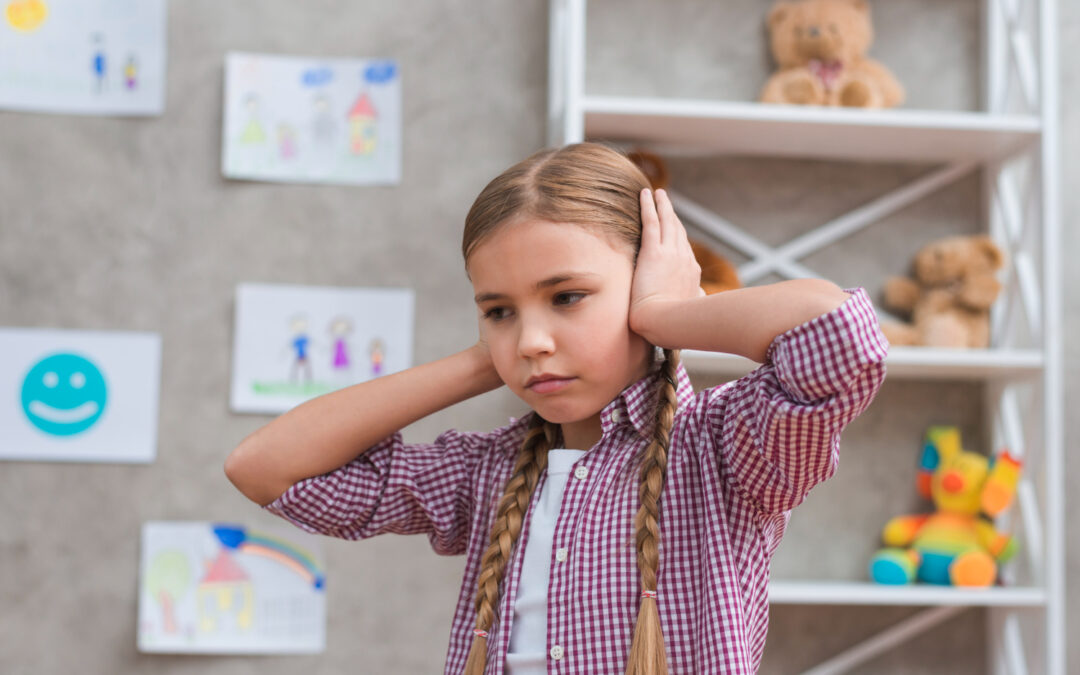Dealing with sensory overload can be a challenging experience for children with autism and their families. It often happens when the brain receives too much information from the senses at once. This can lead to feelings of being overwhelmed or anxious, making it difficult for children to focus or feel comfortable.
Recognizing the signs of sensory overload early on is crucial in helping children manage and navigate their experiences. Behaviors might include covering ears, increased irritability, or withdrawing from the environment. These signs provide an opportunity for parents to intervene and provide the necessary support for their child.
Creating an environment conducive to reducing sensory stress can play a significant role in minimizing those experiences. Simple changes at home or in the classroom can make a big difference. With the right strategies and adjustments, families can help their children handle sensory overload more effectively and comfortably.
Recognizing Signs of Sensory Overload
Understanding when a child with autism is experiencing sensory overload can empower caregivers to provide timely support. Sensory overload occurs when the brain gets bombarded with more information than it can process all at once. This often leads to a variety of visible and behavioral symptoms.
Common signs include covering ears, closing eyes, or rocking back and forth. These are attempts to reduce incoming sensory information. Some children might become more irritable or display sudden changes in mood, like anxiety or frustration. Others may withdraw from their surroundings, seeking solitude to escape overwhelming stimuli.
Physical signs might consist of trembling hands or a flushed complexion, indicating stress. Sudden avoidance of certain environments or people can also signal sensory overload. Recognizing these symptoms early on is vital because it allows caregivers to implement calming strategies before the overload becomes too intense.
Early recognition also helps in adapting environments and routines to better suit the child’s needs. The sooner these signs are identified, the more effectively the child can be supported in managing their sensory experiences. Caregivers can create an immediate sense of relief by stepping in early, easing the child into a calmer state.
Immediate Strategies to Calm Overload
When a child with autism experiences sensory overload, implementing immediate calming strategies can provide fast relief. These techniques focus on reducing sensory input and offering comfort until the child stabilizes.
1. Breathing Exercises: Encourage deep and slow breathing. Techniques like counting breaths or using a breathing app can help the child focus on calming themselves.
2. Quiet Spaces: Create a designated quiet area at home or in school. This space should be free from bright lights and loud sounds, providing a peaceful retreat for your child.
3. Comfort Items: Provide favorite toys, fidget items, or a soft blanket. These can offer reassurance and familiarity, helping the child ease sensory overload.
4. Soothing Music or Sounds: Playing soft, calming music or nature sounds can provide auditory relief and help distract from overwhelming stimuli.
5. Tactile Sensations: If your child responds well to touch, offer a gentle hug or encourage them to squeeze a stress ball. This physical interaction can convey security and calm.
Utilizing these strategies promptly can make a significant difference. They allow the child to regain control over their environment and emotions, ultimately reducing the impact of sensory overload. Providing this immediate relief can also build trust, making future sensory overload episodes easier to handle.
Creating a Sensory-Friendly Environment
Reconfiguring spaces at home or school to be sensory-friendly can drastically reduce stress and overstimulation for children with autism. This approach involves making modifications that cater to their specific sensory needs, creating an environment where they feel more comfortable and in control.
To start, consider using soothing colors. Pastel shades or muted tones like light blue and soft green can have a calming effect, unlike bright, bold colors that might provoke anxiety. Walls and furnishings in these colors can provide a visually restful atmosphere.
Incorporate noise-reducing tools to minimize auditory distractions. Use heavy curtains or carpets to absorb sound, and consider adding sound machines that produce gentle white noise or calming nature sounds. Providing noise-canceling headphones can also help when a child needs silence.
Set up sensory corners where children can retreat when they need a break. These corners could include items like bean bags, tactile toys, or weighted blankets. They offer a safe space where kids can decompress.
Finally, adjust lighting to be softer and more indirect. Dimmable lights or lamps with warm bulbs help reduce glare, creating a more inviting and less stressful environment.
These thoughtful changes can support the child’s sensory needs, making it easier for them to focus and learn without the burden of an overwhelming environment.
Long-Term Management and Coping Skills
Building resilience against sensory overload involves teaching children skills and strategies that they can apply over time. This requires a blend of consistent practice and structured support to help them manage their sensory experiences more effectively.
Therapy options tailored to sensory processing can greatly help. Occupational therapy, particularly sensory integration therapy, provides structured activities that gradually help a child process and respond to sensory input in a more adaptive manner.
Implement routine adjustments to make daily life more predictable and less overwhelming. Consistent schedules can help children know what to expect, reducing anxiety tied to unexpected sensory experiences.
Gradual exposure techniques involve slowly introducing the child to new or challenging environments, starting with short and controlled visits. Over time, extend these visits to help the child adjust and become more comfortable.
Teaching self-regulation skills, like mindfulness or relaxation techniques, can empower children to manage their emotions and reactions during sensory overload. Simple exercises such as deep breathing or visualization can be effective tools.
By focusing on these long-term strategies, children can build the skills needed to navigate a complex sensory world with greater confidence and less distress.
Conclusion
Handling sensory overload in children with autism requires a comprehensive approach that involves immediate responses and long-term strategies. By recognizing the early signs of sensory overload and implementing calming tactics, we can provide immediate support and relief. Furthermore, designing a sensory-friendly environment sets the stage for a more comfortable daily experience, reducing potential triggers. Equipping children with management skills fosters resilience and independence, helping them thrive.
Strive ABA Consultants understands the complexities surrounding sensory overload and autism. Contact us today to explore how our tailored autism parent training programs can support your child in developing coping strategies that enhance their quality of life. Together, we can create impactful change and unlock your child’s full potential.


